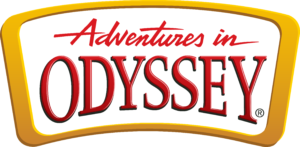MrBeast. James Charles. Daily Dose of Internet.
Chances are, you’ve likely heard names like these and more around your house—the names of YouTubers with millions of subscribers, and with that, lots of influence in the culture.
Since YouTube officially launched in Dec. 2005, influential YouTubers began popping up left and right. YouTubers such as PewDiePie, Smosh and FRED gained thousands upon thousands of views, the latter even gaining his own TV show that ran in 2012.
To put this all into perspective, when YouTube first graced our computer screens in 2005, I was a whopping 7 years old.
What does that tell us? Well, that we’ve had more than enough time for an entire generation of children to grow into adulthood graced by the presence of the video giant and all of its influential content creators. Their names may not be as instantly recognizable as Netflix, Disney+ or HBO Max, but make no mistake: YouTubers have the same—if not more—pull: as of April 2022, YouTube is the second-most visited website on the Internet, beaten only by Google itself. By comparison, the most visited streaming service, Netflix, comes in at 16th. It’s no surprise that children are more influenced by “YouTube stars” than “traditional celebrities” and nearly one-third of kids between the ages of 8 and 12 most aspire to be either a vlogger or a YouTuber.
That pull seems to be growing, too. According to a recent Common Sense Media report on “Media Use by Tweens and Teens,” nearly one in four teenagers said they used YouTube more than any other social media website, and nearly one in three said that it was the social media website they most wouldn’t want to live without. More than four-fifths of them–83%–said that they used YouTube at least once per week, and 64% of tweens and 77% of teens admitted to watching online videos “every day.” Given that Common Sense Media also found that “average time entertainment screen media use” had also risen across all demographics by at least 40 minutes, we can assume that YouTube usage is also rising.
For parents unsure about the implications of that, it’s important to remember that YouTube is, in essence, a video library. In any library, physical or virtual, consumers have access to hundreds upon hundreds of different authors and creators—and not all of those contributors will be appropriate for all ages. And with around 500 hours of video uploaded to the website each minute, it’s getting much more difficult to catch every instance of content that parents may be concerned about. That’s one of the reasons why Plugged In reviews popular and trending YouTube channels so parents know just what content concerns their children may be watching.
Though YouTube has some restrictions in place against certain types of videos, including those containing nudity, self-harm or violent content, parents may find that the video-sharing giant’s definitions of these terms may be looser than their own. Within YouTube’s vast library, consumers can find videos intentionally created for children as well as videos that would be deeply inappropriate for children. And while it does its best (or so we hope), the service doesn’t know what’s appropriate for your children—or what rules and standards you might have in place in your home. What YouTube believes is perfectly fine content for a 13-year-old you may find wholly out of bounds. And with the YouTube algorithm recommending videos for viewers to watch after they finish one, it’s doesn’t take long to go down a long rabbit trail of potentially inappropriate videos.
So, what can parents do in order to mitigate the content their child is likely to be influenced by? One route is to create a YouTube Kids or a Supervised account, both of which automatically remove many inappropriate videos, allow parents to set screen time limits and block the search option as well as specific channels from being accessed. However, it is important to note that even on the more restrictive YouTube Kids option, videos pertaining to transgenderism and LGBT issues were still available and would have to be blocked by parents. For parents who don’t want to create an entirely new account, they can activate “Restricted Mode” by clicking on their YouTube profile and clicking on the tab at the bottom called “Restricted Mode.” When this is on, “videos that may contain inappropriate content flagged by users and other signals” will be blocked, and viewers will be unable to see comments on videos.
However, some may find that those limited options are simply not enough. Parents may consider purchasing one of many monitoring software options in addition to utilizing YouTube’s current parental controls. For a summary of a variety of these, Plugged In has provided brief descriptions here. For parents looking for a step-by-step guide for parental controls on YouTube as well as popular streaming services, Focus on the Family has a text-based tutorial here.
YouTube just might be the most influential form of media your children engage with. And with YouTube’s popularity continuing to rise, it’s inevitable that children will access and be influenced by the content creators across the site. Because of this, parents will need to discern what aspects of the video-sharing service their child is ready to be exposed to. YouTube surely isn’t waiting for parents to decide.







Recent Comments